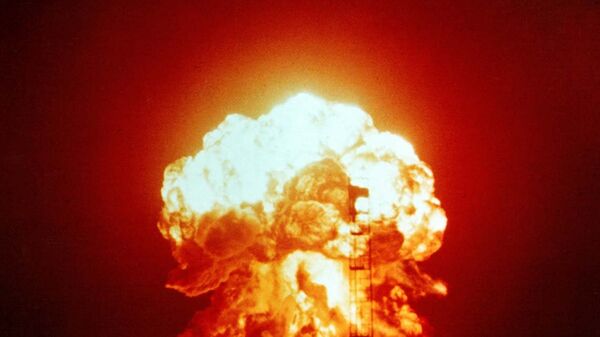MOSCOW (Sputnik) — The report listed "a dangerous nuclear situation on multiple fronts," "the clear need for climate action," "potential threats from emerging technologies" as main reasons for the clock readjustment.
"For the last two years, the minute hand of the Doomsday Clock stayed set at three minutes before the hour, the closest it had been to midnight since the early 1980s… In 2017, we find the danger to be even greater, the need for action more urgent. It is two and a half minutes to midnight, the Clock is ticking, global danger looms," the report read.
The report proposed listening to expert opinion and stronger citizen action to counter the danger.
The Doomsday Clock graphic first appeared on the cover of the Bulletin of the Atomic Scientists 70 years ago and has been the barometer of the planet's safety ever since.
Last time the Doomsday Clock was moved forward was 2015, advancing to 3 minutes to midnight from 5 minutes.



